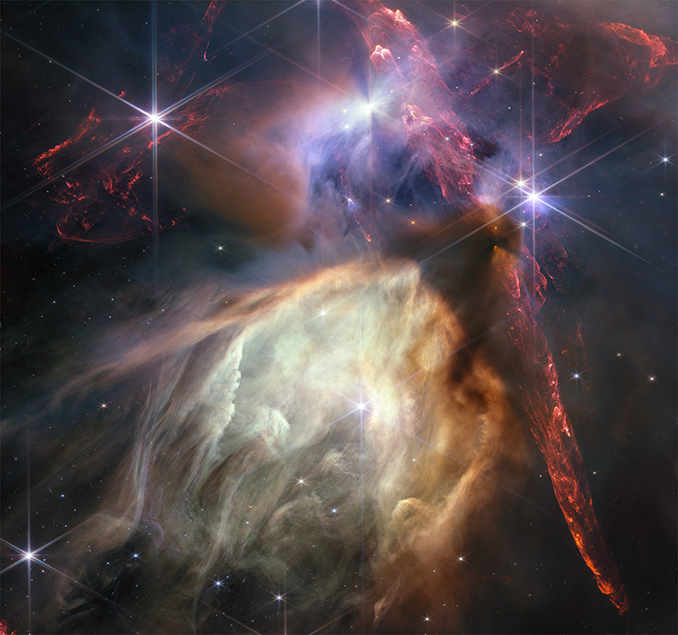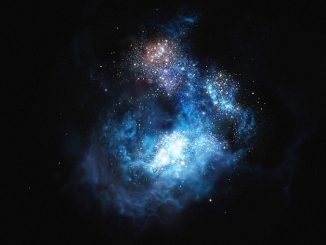
Celebrating the James Webb Space Telescope’s first year of science operations, NASA released a mesmerising new image of a nearby stellar nursery where 50 or so sun-size stars are blazing or just switching on in shimmering clouds of interstellar hydrogen.
The relatively small star-forming region is embedded in the Rho Ophiuchi cloud complex and is the closest such nursery to Earth.
The Webb image “shows a region containing approximately 50 young stars, all of them similar in mass to the Sun, or smaller,” NASA said in a news release describing Webb’s Near Infrared Camera, or NIRCam view. “The darkest areas are the densest, where thick dust cocoons still-forming protostars.”
“Huge bipolar jets of molecular hydrogen, represented in red, dominate the image, appearing horizontally across the upper third and vertically on the right. These occur when a star first bursts through its natal envelope of cosmic dust, shooting out a pair of opposing jets into space.”
In contrast, a star known as S1 “has carved out a glowing cave of dust in the lower half of the image,” the description says. “It is the only star in the image that is significantly more massive than the Sun.”

Webb was launched in 2021 on Christmas Day. It took a month to reach its observation post a million miles on the far side of the moon’s orbit and to deploy its huge sunshade and two sets of mirror segments that were folded away for launch.
Project scientists and engineers then spent nearly six months precisely aligning its optical system to achieve a razor-sharp focus, testing the observatory’s four instruments and verifying its myriad subsystems were working normally. The first science images from the $10 billion telescope were released on 12 July 2022, wowing the astronomical community.
The 2023 anniversary photo capped a steady stream of ground-breaking observations that have repeatedly demonstrated the capabilities of the world’s largest and most expensive space telescope.
“In just one year, the James Webb Space Telescope has transformed humanity’s view of the cosmos, peering into dust clouds and seeing light from faraway corners of the universe for the very first time,” NASA Administrator Bill Nelson said in a statement. “Every new image is a new discovery.”
Said Eric Smith, a senior manager in NASA’s astrophysics division and the Webb program scientist: “The breadth of science Webb is capable of exploring really becomes clear now, when we have a full year’s worth of data from targets across the sky.
“Webb’s first year of science has not only taught us new things about our universe, but it has revealed the capabilities of the telescope to be greater than our expectations, meaning future discoveries will be even more amazing.”



